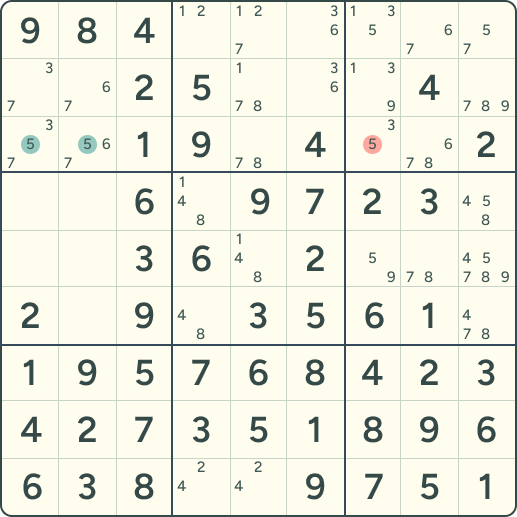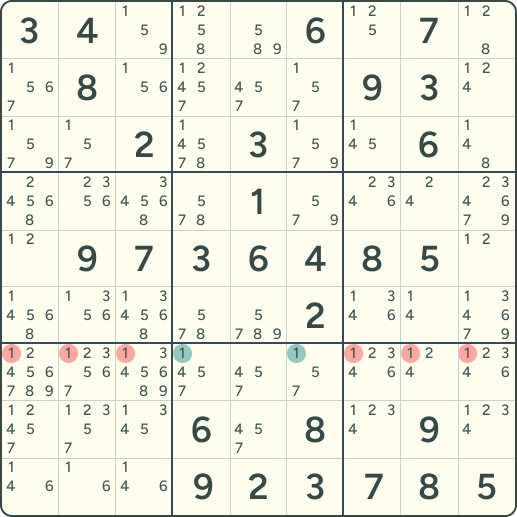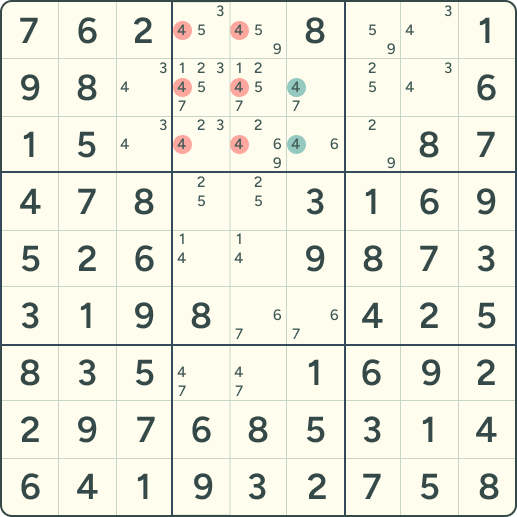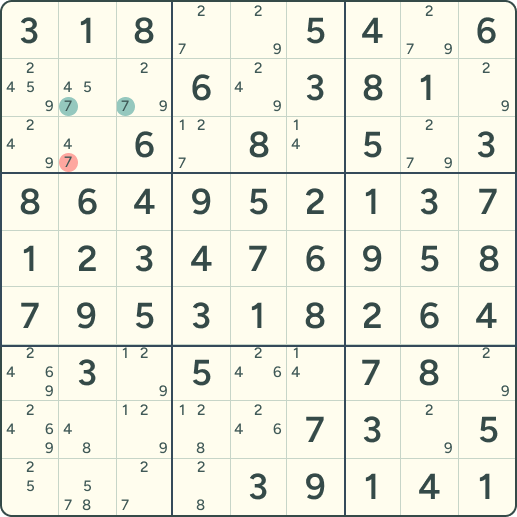The Locked Candidates Technique in Sudoku
Core Concept
The Locked Candidates are also referred to as an Intersection Removal. This occurs when a digit can only have a certain placement within a row/column in a certain block; this allows for eliminations in intersecting areas. This technique has two subtypes: Claiming (Type 2) and Pointing (Type 1).Locked Candidates Type 1: Pointing (Block-to-Line)
A digit being placed within a block limits it to one row or column. Hence, it also blocks a possibility within that same line outside the block.Example 1
Example 1: In B1 candidate 5 C5 appears only in R3. R3C1-R3C2 is 5. Since 5 has to go to one of these cells to for B1, it eliminates from R3C7 – in the same row, different block.
Example 2
Example 2: In B8 S9 all 1s are restricted to R7 are removed. This makes R7 cells in overlapping blocks B7 and B9. Such cases can remove up to 6 candidates.
Locked Candidates Type 2: Claiming (Line-to-Block)
Once a digit's candidates are contained within one block, along a row or column, it will be excluded from other cells in that block.Example 1 :
1. In B1, candidate 7 straddles C1 and C3. 2. Thus, 7 is eliminated from R3C2 in B1.
Example 2 :
1. In C6 B2 is B4. All 4s in C6 are within B2 2. consequently allowing B2 to perform 4 elimination elsewhere.



